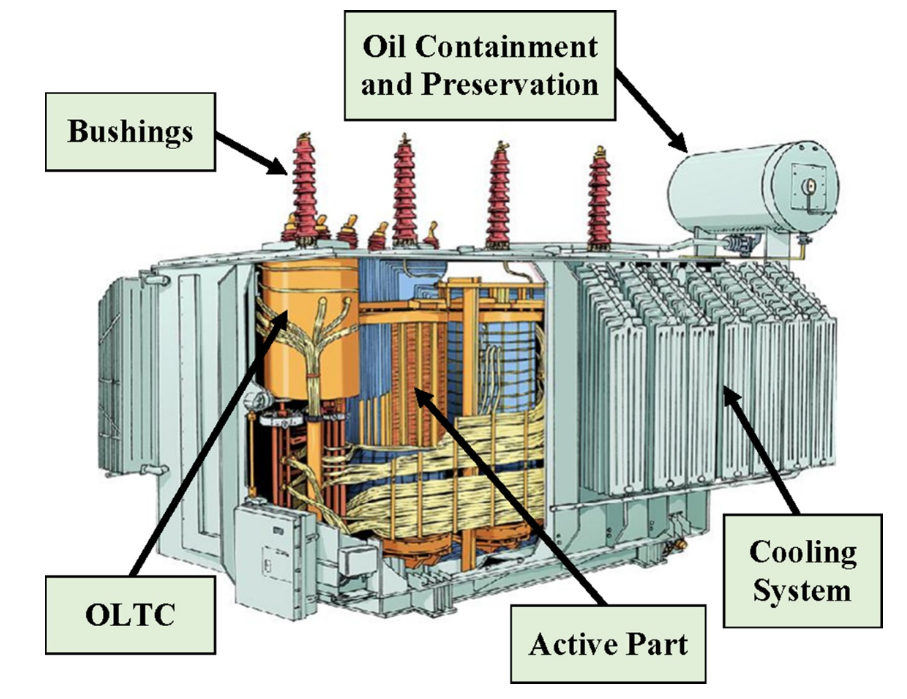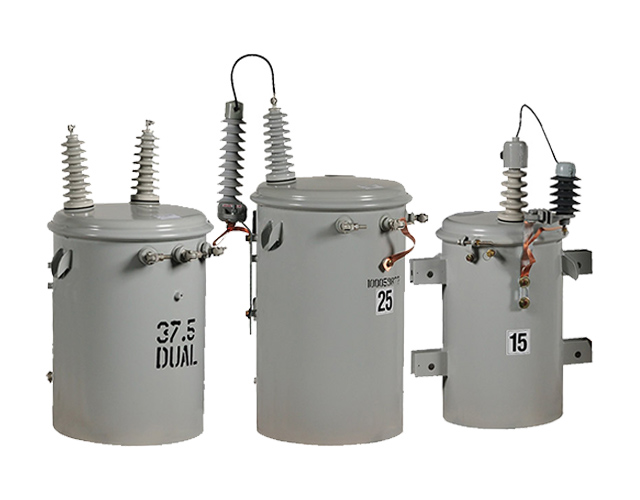In the field of electricity, power transformers and distribution transformers are two important components that play different roles in the power system. To clearly understand the differences between them, let’s first get to know the definitions, application ranges, and working principles of these two types of transformers.
Definition and Characteristics of Power Transformers

Power transformers are mainly used to change the voltage and current characteristics of power signals, thereby ensuring that electricity can be smoothly transmitted in circuits with different power requirements and ratings. Like other transformers, it belongs to static electrical machines because there are no moving parts inside (although tap changers and protective valves will operate under certain circumstances, but not during the stable operation of the transformer). Power transformers can be used as step-up or step-down transformers according to actual needs to adjust the voltage and current levels of electrical signals. Its working principle is based on mutual induction, and during the voltage and current conversion process, the power and frequency on both sides of the transformer remain unchanged, which means that equivalent power transmission can be achieved between circuits with different voltage and current levels.
In practical applications, power transformers are usually installed in power generation stations to support the power generation and transmission processes. It can also connect power generation stations with different voltage levels and enhance the power supply capacity of the entire power system. Through the interconnected network of transformers and power generation stations, the power system has been significantly improved in terms of reliability, operation time, maintenance convenience, and islanded operation, and all of this cannot be achieved without the role of power transformers.
Definition and Characteristics of Distribution Transformers

Distribution transformers can also change the voltage and current characteristics of power signals, but their purpose is to meet the power consumption needs of end-users such as households, offices, and commercial markets. Its output power can be directly used by users, so it is widely distributed in areas where end-users are concentrated, such as towns. Distribution transformers also work based on the principle of mutual induction and do not change the power and frequency of the input power signals.
Specific Differences between the Two
- Applicable Network Types: Power transformers are suitable for high-voltage transmission networks, while distribution transformers are used in low-voltage distribution networks.
- Size Difference: Power transformers have more design specifications, so their volumes are much larger than those of distribution transformers.
- Different Design Efficiencies: Power transformers, as the starting link of the power system circuit, have extremely high design efficiencies, reaching approximately 99.5%; the design efficiency of distribution transformers is relatively low, ranging from 50% to 70%.
- Rating Ranges: The voltage ratings of power transformers are usually between 33kV and 700kV, while distribution transformers are used in lower voltage networks with ratings ranging from 230V to 33kV.
- Efficiency Calculation Formulas: The efficiency of power transformers is calculated by the simple ratio of output power to input power; the efficiency of distribution transformers is calculated by the ratio of output to input in kilowatt-hours within 24 hours.
- Differences in Application Scenarios: Power transformers are mainly used in power generation stations and transmission substations; distribution transformers are mainly used for the daily power consumption of households and industries.
- Maximum Usage Ratings: Power transformers need to transmit a large amount of power to the system, and their maximum power ratings are generally 200MVA or above; distribution transformers transmit less power, and their ratings are usually less than 200MVA.
- Differences in Operating Conditions: Power transformers always supply power to multiple loads under full load conditions; distribution transformers operate under less than full load conditions.
- Flux Density Levels: The flux density of power transformers is greater than that of distribution transformers.
- Load Fluctuation Situations: The loads connected to distribution transformers account for a relatively small proportion in the power system, and the load fluctuations are more frequent; the loads connected to power transformers account for a relatively large proportion, and the load fluctuations are relatively small.
- Differences in Functional Uses: Power transformers perform multiple functions in high-voltage networks, including increasing or decreasing the voltage as needed; distribution transformers are mainly used to connect end-users to the power system and realize one-way power transmission by stepping down the voltage.
- Core Design Differences: In order to achieve the highest efficiency, the core design of power transformers pursues the maximum flux density and is usually close to the saturation point of the B – H curve to reduce the core mass; distribution transformer cores have multiple types, among which the E-core design is more common.
Through the above comparative analysis of power transformers and distribution transformers in multiple aspects, we can more accurately distinguish these two types of transformers, so as to make reasonable choices and decisions in the design, operation, and maintenance of the power system.

